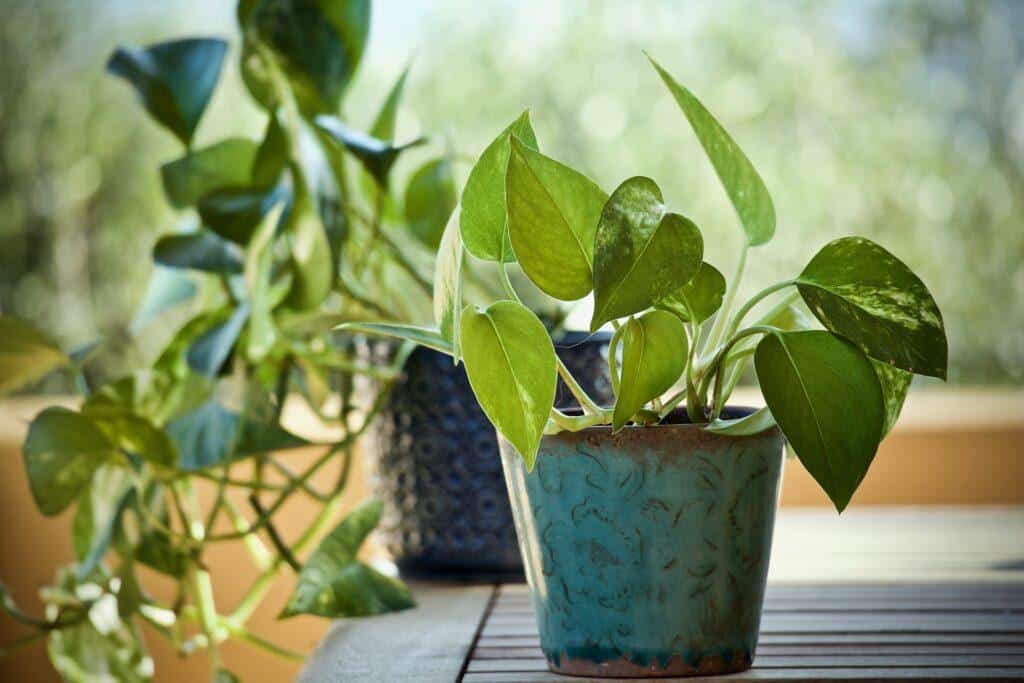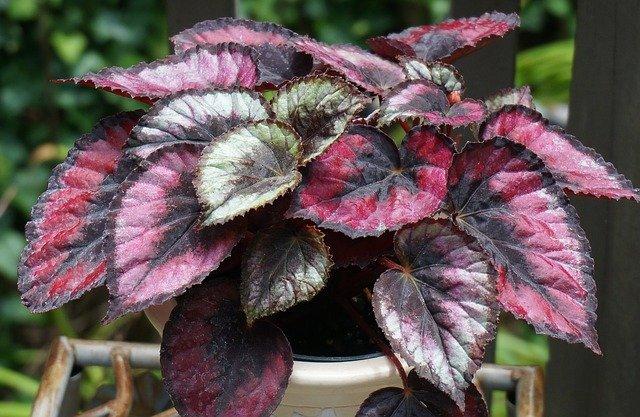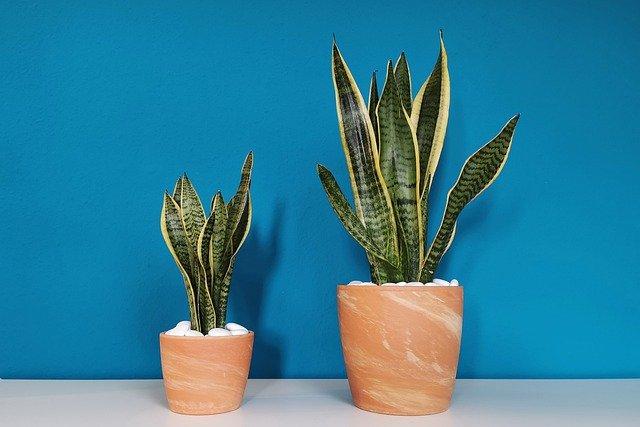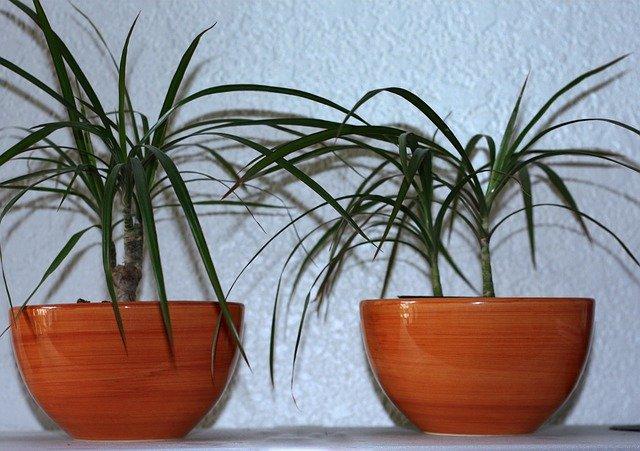Placing your houseplant in front of a window doesn’t necessarily mean it will get enough light. This blog will help you pick out the best north-facing window plants. The hours of sunlight and the intensity of sunlight will change based on the direction of your window. This is due to Earth rotating on its axis and orbiting the sun. The North Pole is tilted toward the sun during the summer resulting in warmer temperatures and longer hours of sunlight.
Sunlight in a Nort-Facing Window.
In the northern hemisphere, you will not get direct sunlight through a north-facing window. That doesn’t mean there’s no light coming in your window. It just means the light you get from that window is reflected off of something else. The sun rises in the east and sets in the west. If your window is actually northwest or northeast you may get a little direct sun. The lack of direct sunlight also makes north-facing windows the coldest windows. Sciencing has a great article Sun Intensity vs. Angle that does a great job explaining more on these concepts.
Other Factors Affecting Light to North-Facing Window Plants.
There may be trees, plants, buildings, or other structures that reduce the amount of light coming through your window. You also need to consider things obstructing the inside of your windows such as blinds or curtains. Will you remember to raise your blinds every day for your plant? Do you have a sheer curtain you want to leave hanging all the time?
You can also enhance or supplement light in your house. You can use a mirror to reflect the sunlight coming through your window and back toward your plant. White surfaces like a dresser or a cabinet reflect light as well. You can also set up grow lights if you want to seriously increase the amount of light your plant gets.
What Are the Best North-Facing Window Plants?
North facing windows get the least amount of light from the sun. You also need to assess other factors affecting the light from your north-facing window. You want to stick with plants that characterize their light requirements as “full shade” or “low light.” You may be able to have plants that require “bright indirect light” or “partial shade” as well.
Pothos
Pothos come in a variety of leaf colors. Popular varieties are the Golden Pothos (with gold and green leaves), Marble Queen Pothos (with white and green leaves), Neon Pothos (with yellow-green leaves), and Satin Pothos (with silvery spots on dark green leaves). Pothos are great. I personally have each of the varieties listed above. I like that they grow fast. Who doesn’t love the thrill of a new leaf? They may not grow so quickly if your north-facing gets very little light.

| Light | Water | Soil | Fertilizer |
| Bright indirect light. Tolerates low light. | Top inch should be dry before watering. | Well draining potting soil. | Monthly during the growing season. |
Pothos can grow fairly long. I have a few vines that are around 20 feet long. They are toxic to cats and dogs. The sap or liquid you see when breaking a stem or leaf may be a mild skin irritant to some.
Rex Begonia
Rex Begonias come in many varieties. This plant is your best bet for adding some color to your north-facing window that’s not green. In low light windows, most flowering plants will not flourish but Rex Begonias have beautiful decorative foliage with reds, pinks, purples, sliver, and greens.

| Light | Water | Soil | Fertilizer |
| Bright indirect light. Tolerates low light. | Top inch should be dry before watering. | Well draining potting soil. | Every 2 weeks during the growing season. |
Rex Begonias are compact and generally stay under one foot tall. They are toxic to cats and dogs. The sap or liquid you see when breaking a stem or leaf may be a mild skin irritant to some.
Snake Plant
Snake Plants routinely make the lists for easiest houseplants to care for. They can tolerate a wide range of light. These plants will do fine in a north-facing window, but it’s not going to grow very fast there. If you want a taller plant for your space, this one may fit the bill. Home improvement stores almost always have these in stock. If you’re looking to start out with a larger one, because they grow slowly, you may need to check your specialty garden store.

| Light | Water | Soil | Fertilizer |
| Moderate to bright indirect light. Tolerates low light. | Top inch should be dry before watering. | Well draining potting soil. | A few times per growing season. |
Snake Plants can grow over 2 feet tall. Their leaves come in a variety of colors and patterns. They are toxic to cats and dogs. The sap or liquid you see when breaking a stem or leaf may be a mild skin irritant to some.
Calathea
Calatheas are beautiful foliage plants. Their leaves come in a variety of shapes, colors, and patterns. Choose a Calathea or two if you want to add something interesting to your north-facing window. There are over a dozen varieties with unique designs.

| Light | Water | Soil | Fertilizer |
| Bright indirect light. Tolerates low light. | Keep soil moist but not soggy. | Well draining potting soil. | Every 2 weeks during the growing season. |
Calatheas will typically stay under two feet tall and they are considered slow growers. They are not toxic to cats and dogs.
Draceana
Many houseplants fall into the Dracaena genus. The ones that are typically sold as indoor plants tend to have a stalk or cane, giving them a palm tree look. Some popular houseplant varieties are Marginata, Corn Plant, and Janet Craig. If your north-facing window needs a taller plant, this may be your choice. These plants can tolerate low light. I kept one in a corner behind my couch for years before I knew anything about plants.

| Light | Water | Soil | Fertilizer |
| Bright indirect light. Tolerates low light. | Top inch should be dry before watering. | Well draining potting soil. | Monthly during the growing season. |
As mentioned earlier, these are often sold in a tree-like form and get over two feet tall. These plants are slow growers. They are toxic to cats and dogs.
Dieffenbachia
Dieffenbachia, sometimes called Dumb Cane, are large and leafy. If you are going for a jungle look, this plant can help. The large leaves come in several color patterns in greens, yellows, and whites. They can do well as a north-facing window plant.

| Light | Water | Soil | Fertilizer |
| Bright indirect light. Tolerates low light. | Keep soil moist but not soggy. | Well draining potting soil. | Monthly during the growing season. |
These plants can get up to ten feet tall! They can grow fast, but keep in mind it will not grow very quickly in a north-facing window. Dieffenbachia are toxic to cats and dogs. The sap of this plant is caustic and should not be handled. It goes without saying that it should not be ingested either. If ingested it can cause numbing or intense irritation, hence the name Dumb Cane.
What other indoor plants do you have hanging out in your north-facing windows? Share in the comments. If you need plant recommendations for other window directions, check out my blog on east-facing windows, south-facing windows, and west-facing windows.
- Common Ponytail Palm Problems
- Variegated Jade Plant Care
- Croton Petra Care
- Croton Petra Drooping
- All About Croton Leaves

I'm a long time plant lover on the quest to happily coexist with as many plants as I can. Let's grow!
